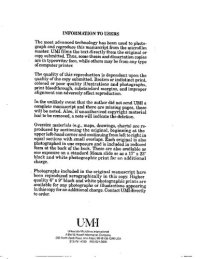
Ebook: Tone and Tone Sandhi in Chinese
Author: Zheng-sheng Zhang
- Year: 1988
- Publisher: Ohio State University
- Language: English
- pdf
In this dissertation, three Chinese languages, Mandarin, Danyang and Shanghai are examined, with particular attention to the issues of the units of tonal representation and the domains of tone sandhi.
It is argued that it is the syllable or the segment that is the unit of tonal representation in Mandarin; for Danyang it is the foot, and finally, the unit of tonal representation is the phonological word in Shanghai.
Hierarchical phonological structure is relevant to tonal phenomena in various ways. It will be shown that tonal rules previously formulated in purely tonal terms should be more explanatorily formulated with reference to hierarchical phonological structure. Prosodic domains non-isomorphic with morphosyntactic organization are found to serve as the domain of tone sandhi and other phonological rules. Specifically, the foot, which is argued to be the basic domain of the Third Tone Rule, is used in the fast speech Second-to-First Tone Rule and segmental lenition as well as in Mandarin. The foot also serves as the domain of tonal melodies in Danyang. In addition to the foot, larger prosodic units are also motivated by language-particular facts. Higher prosodic constituents, defined according to the discourse structure, must play a role in the account of Mandarin Third Tone Rule as well.
In both Danyang and Mandarin, a preference for left-branching prosodic structure is observed. The preference for left-branching structures is attributed to the tendency toward left-dominance. It is hypothesized that left-dominance first gives rise to left-branching prosodic sandhi domains, which then become melody-bearing units. The tendency toward left-dominance then is the motivation for both the change from right-dominance to left-dominance and also the transition from syllable tone to word tone languages.
It is argued that it is the syllable or the segment that is the unit of tonal representation in Mandarin; for Danyang it is the foot, and finally, the unit of tonal representation is the phonological word in Shanghai.
Hierarchical phonological structure is relevant to tonal phenomena in various ways. It will be shown that tonal rules previously formulated in purely tonal terms should be more explanatorily formulated with reference to hierarchical phonological structure. Prosodic domains non-isomorphic with morphosyntactic organization are found to serve as the domain of tone sandhi and other phonological rules. Specifically, the foot, which is argued to be the basic domain of the Third Tone Rule, is used in the fast speech Second-to-First Tone Rule and segmental lenition as well as in Mandarin. The foot also serves as the domain of tonal melodies in Danyang. In addition to the foot, larger prosodic units are also motivated by language-particular facts. Higher prosodic constituents, defined according to the discourse structure, must play a role in the account of Mandarin Third Tone Rule as well.
In both Danyang and Mandarin, a preference for left-branching prosodic structure is observed. The preference for left-branching structures is attributed to the tendency toward left-dominance. It is hypothesized that left-dominance first gives rise to left-branching prosodic sandhi domains, which then become melody-bearing units. The tendency toward left-dominance then is the motivation for both the change from right-dominance to left-dominance and also the transition from syllable tone to word tone languages.
Download the book Tone and Tone Sandhi in Chinese for free or read online
Continue reading on any device:

Last viewed books
Related books
{related-news}
Comments (0)